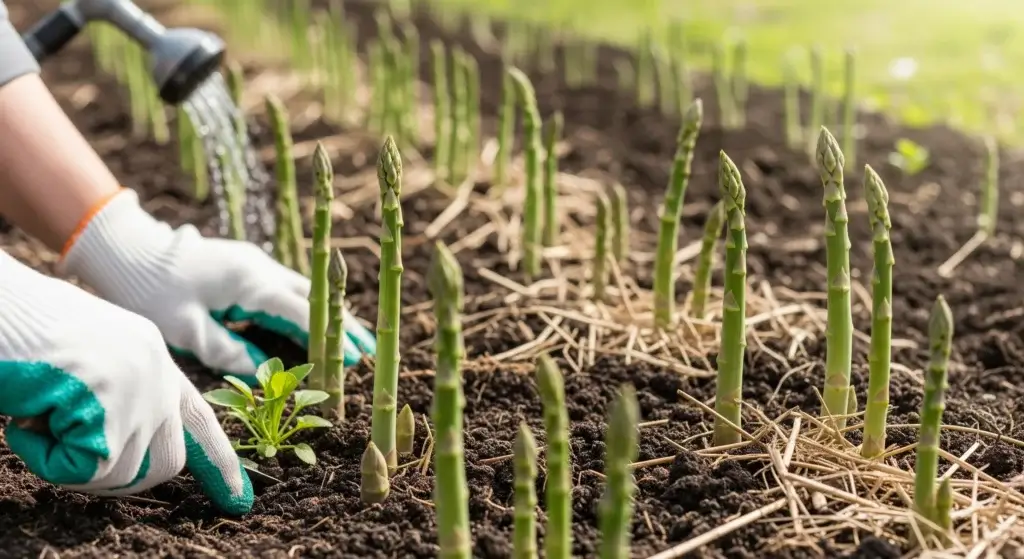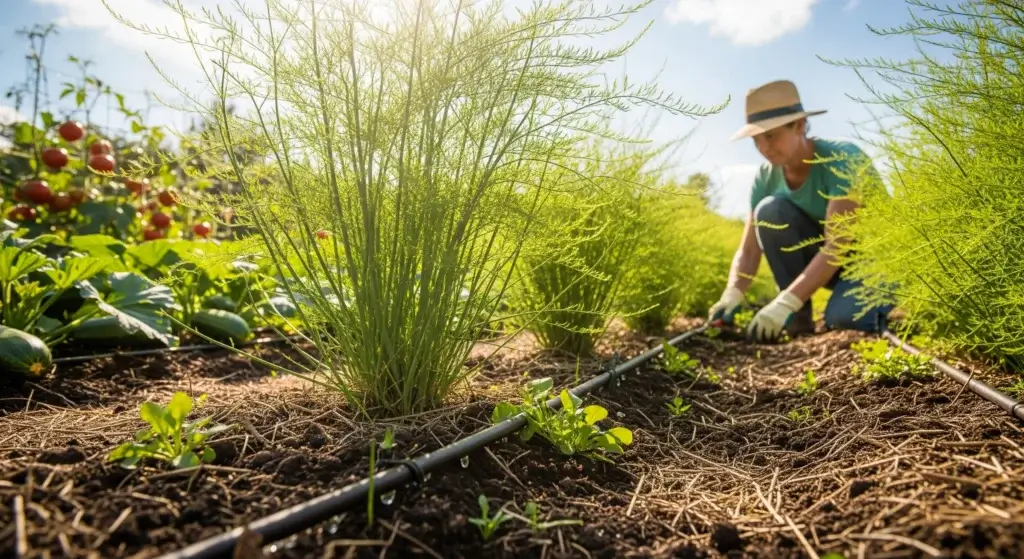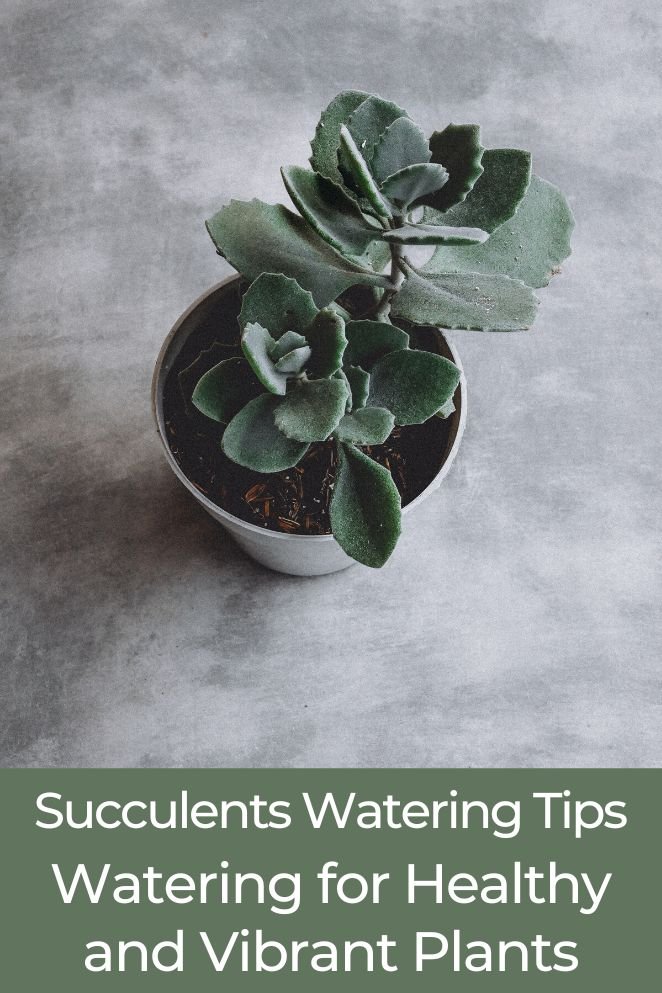
Succulents, known for their resilient nature, often suffer due to well-intentioned but misguided watering practices.
This article delves into the nuances of succulent watering, highlighting common mistakes enthusiasts make, deciphering signs of both underwatering and overwatering and offering essential tips for ensuring your succulents not only survive but thrive in their low-maintenance habitat.
Dive into the world of succulent care to unlock the secrets of optimal watering practices.
Common Watering Mistakes for Your Succulents
Let’s delve into the most prevalent mistakes enthusiasts make and unravel the delicate balance between hydration and drought in succulents.
- Read also: Unveiling the Secret of Corn Plant Watering
- Read also: Mint Plant Watering for Explosive Growth
Overwatering
Succulents, endowed with fleshy leaves and stems, beckon enthusiasts to indulge in their love for water.
However, this very feature becomes a pitfall if overwatering occurs.
These water-storing marvels are predisposed to rot when their innate reservoirs are inundated.
The excess moisture disrupts their equilibrium, compromising their structural integrity and overall health.
Identifying the thin line between hydration and excess is pivotal to safeguarding succulents from the perils of overwatering.
Underwatering
Conversely, underwatering emerges as a lurking concern in succulent care.
While these plants are adept at water storage, prolonged periods without moisture can lead to dehydration and wilting.
The leaves, designed to retain water, lose their plumpness, and the once-vibrant succulent transforms into a shadow of its resilient self.
Recognizing the subtle signs of thirst and responding promptly is essential to prevent succulents from succumbing to the risks of underwatering.
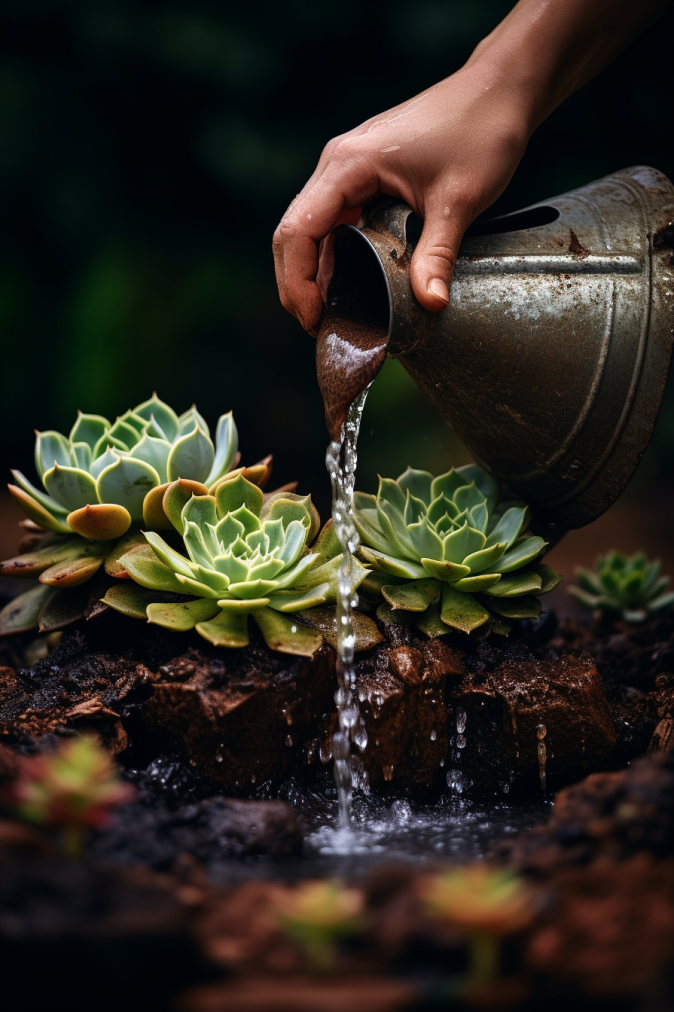
Signs of Underwatering and Overwatering Your Succulents
In the intricate world of succulent care, deciphering the subtle signs of underwatering and overwatering is a skill that can make all the difference in the health and vibrancy of your resilient plants.
Let’s explore the nuanced language of succulents and understand the telltale signs that indicate whether they’re thirsty or drowning.
Signs of underwatering
Shriveled or wrinkled leaves
Succulents are adept at storing water in their fleshy leaves, but when deprived, these reservoirs deplete, resulting in a shriveled or wrinkled appearance.
The once plump and turgid leaves lose their vitality, signaling a need for hydration.
Regularly inspecting the leaves for this subtle transformation is crucial for timely intervention.
Signs of overwatering
Black spots
Overwatering can lead to an excess of moisture, creating a hospitable environment for fungi.
Black spots on the leaves are indicative of fungal growth, a visible consequence of too much water.
Monitoring for these spots allows for swift corrective action to prevent further damage.
Mushy stems
Succulents, designed to be resilient, succumb to mushiness when overwatered.
The excess moisture compromises the structural integrity of the stems, leading to a soft and mushy texture.
Touch becomes a valuable diagnostic tool to discern whether your succulent is receiving more water than it can handle.
Foul odor
Overwatering creates a stagnant environment that promotes the growth of harmful bacteria and fungi, producing a foul odor.
A discernible unpleasant smell emanating from your succulent indicates an imbalance in watering.
Addressing this issue promptly is crucial to prevent further complications.
Tips for Watering Your Succulents
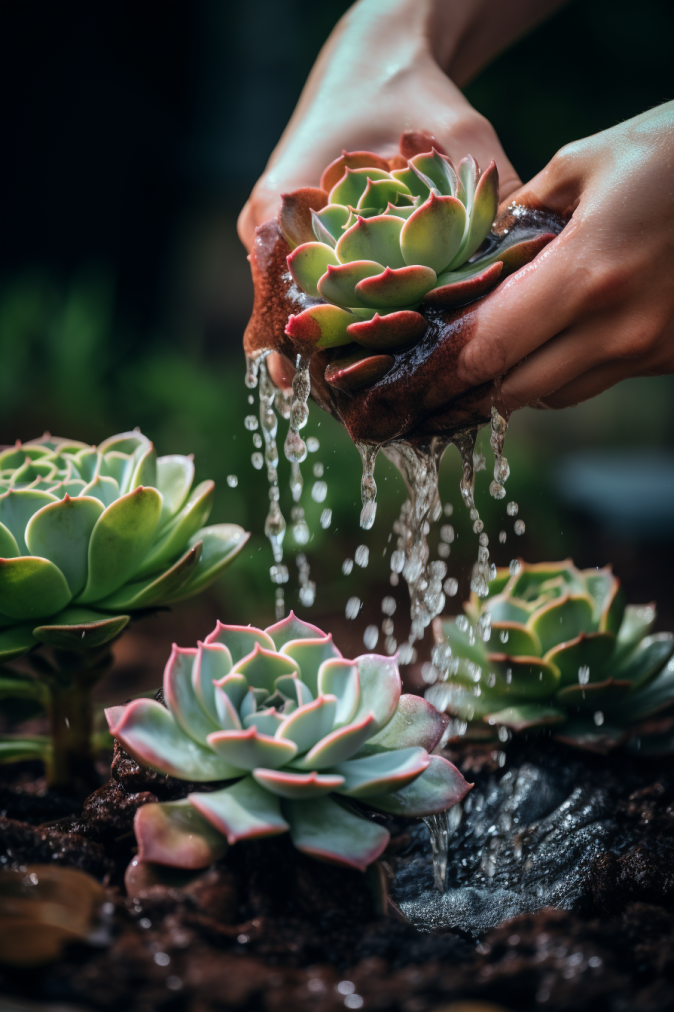
Cultivating thriving succulents involves more than sporadic watering; it’s an art of precision and understanding.
Unlock the secrets to successful succulent hydration with these expert tips, ensuring your resilient plants flourish in their arid elegance.
Embrace the “soak and dry” method
This tried-and-true technique mimics the natural watering patterns of succulents in their native habitats.
When it’s time to water, do so thoroughly until water escapes from the drainage holes.
Allow the soil to dry out completely before the next watering.
This method ensures that the roots receive ample moisture without succumbing to the perils of overwatering.
Pot and soil selection matters
Succulents detest standing water around their roots.
Opt for well-draining pots with ample drainage holes to facilitate water escape.
Pair this with a specialized succulent or cactus mix designed for optimal aeration and drainage.
The combination of the right pot and soil safeguards against water pooling, a common woe that succulents abhor.
Timing is everything
Choose the right moment to quench your succulents’ thirst.
Mornings, with their gentle sunlight, are the optimal time for watering.
This allows any excess moisture to evaporate during the day, preventing prolonged dampness that could lead to overwatering-related issues.
Avoid evening watering, as succulents prefer entering the night with dry soil.
Quantity matters, but not too much
When watering, aim for thorough saturation without drowning your succulents.
Ensure that water reaches the roots by watering until it flows out of the drainage holes.
However, strike a balance; avoid saturating the soil excessively, as succulents prefer brief, intense hydration rather than prolonged dampness.
The touch test
Develop a tactile relationship with your succulents. Before each watering session, perform the touch test.
If the soil feels dry to the touch, it’s time to water.
This hands-on approach fosters a deeper connection with your plants, allowing you to respond to their unique hydration needs.
Monitor seasonal shifts
Succulents adapt their water requirements based on the seasons.
During active growth phases, such as spring and summer, they may demand more frequent watering.
In contrast, reduce watering during dormant periods, like winter.
Observing and adjusting your watering routine in sync with seasonal shifts is key to succulent health.
How Often Do You Need to Water Succulents?
Understanding how often to water your succulents is a puzzle with multiple pieces, influenced by climate, succulent type, and potting mix.
To demystify this, follow a golden rule: it’s safer to underwater than overwater.
Let the soil fully dry out between watering sessions to ensure a balanced and thriving succulent environment.
The key lies in harmony and moderation, ensuring your succulents receive the right amount of hydration without drowning their resilience.
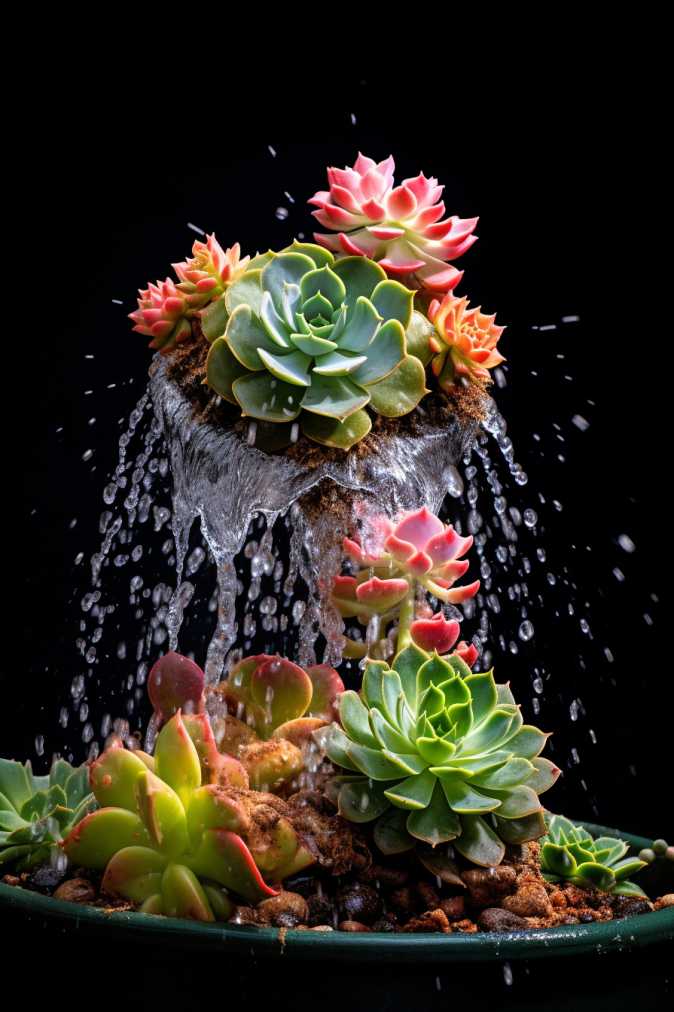
What Type of Water Should You Use?
Succulents, delicate in their preferences, react to the minerals and chemicals found in tap water.
Optimal hydration involves selecting distilled water or rainwater. In cases where these alternatives are unavailable, allowing tap water to stand for 24 hours proves beneficial, allowing chlorine to dissipate.
This thoughtful selection of water ensures that your succulents receive the purest and most nurturing hydration, safeguarding them from the potential adverse effects of tap water components.
- Read also: The Ultimate Aloe Plant Watering Care Guide
- Read also: Tomato Plant Watering Schedule
Conclusion
In the journey of succulent care, the mastery of watering emerges as a linchpin for their well-being.
Steering clear of common mistakes, adeptly recognizing signs of both underwatering and overwatering, and embracing the right watering tips are the harmonious notes that compose a vibrant succulent symphony.
Through these practices, your succulents not only survive but thrive, showcasing resilience and vibrancy in every leaf.
FAQs
While misting with a spray bottle can be beneficial in some cases, it’s generally not sufficient for watering succulents, as it doesn’t reach the roots. It’s better to water the soil directly.
Not necessarily. Different succulents have varying water needs, so it’s best to observe each plant individually and water based on its specific requirements. This article is an original creation by the AI and does not contain any plagiarized content.

